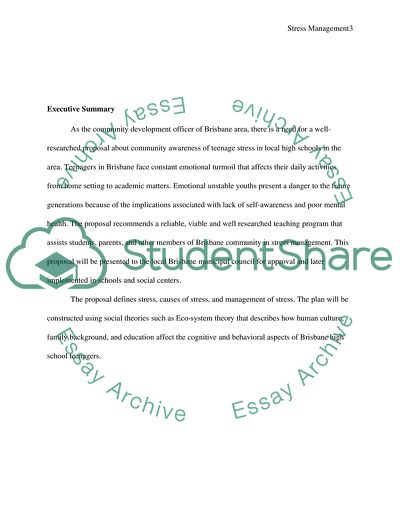Cite this document
(Awareness of Teenage Stress Research Proposal Example | Topics and Well Written Essays - 2000 words, n.d.)
Awareness of Teenage Stress Research Proposal Example | Topics and Well Written Essays - 2000 words. Retrieved from https://studentshare.org/psychology/1782307-proposal-community-awareness-of-teenage-stress
Awareness of Teenage Stress Research Proposal Example | Topics and Well Written Essays - 2000 words. Retrieved from https://studentshare.org/psychology/1782307-proposal-community-awareness-of-teenage-stress
(Awareness of Teenage Stress Research Proposal Example | Topics and Well Written Essays - 2000 Words)
Awareness of Teenage Stress Research Proposal Example | Topics and Well Written Essays - 2000 Words. https://studentshare.org/psychology/1782307-proposal-community-awareness-of-teenage-stress.
Awareness of Teenage Stress Research Proposal Example | Topics and Well Written Essays - 2000 Words. https://studentshare.org/psychology/1782307-proposal-community-awareness-of-teenage-stress.
“Awareness of Teenage Stress Research Proposal Example | Topics and Well Written Essays - 2000 Words”. https://studentshare.org/psychology/1782307-proposal-community-awareness-of-teenage-stress.


